
F-100C

In January 1951, North American Aviation delivered an unsolicited proposal for a supersonic day fighter to the United States Air Force. Named Sabre 45 because of its 45° wing sweep, it represented an evolution of the F-86 Sabre. The mock-up was inspected on 7 July 1951, and after over a hundred modifications the new aircraft was accepted as the F-100 on 30 November 1951. Extensive use of titanium throughout the aircraft was notable. On 3 January 1952, the USAF ordered two prototypes followed by 23 F-100As in February and an additional 250 F-100As in August.
The YF-100A first flew on 25 May 1953, seven months ahead of schedule. It reached Mach 1.05 in spite of being fitted with a de-rated XJ57-P-7 engine and became the first production aircraft capable of supersonic speed in level flight. The second prototype flew on 14 October 1953, followed by the first production F-100A on 9 October 1953. The USAF operational evaluation from November 1953 to December 1955 found the new fighter to have superior performance but declared it not ready for wide scale deployment due to various deficiencies in the design. These findings were subsequently confirmed during "Project Hot Rod" operational suitability tests. Particularly troubling was the yaw instability in certain regimes of flight which produced inertia coupling. The aircraft could develop a sudden yaw and roll which would happen too fast for the pilot to correct and would quickly over stress the aircraft structure to disintegration. It was under these conditions that North American's chief test pilot, George Welch, was killed while dive testing an early-production F-100A on 12 October 1954. Another control problem stemmed from handling characteristics of the swept wing at high angles of attack. As the aircraft approached stall speeds, loss of lift on the tips of the wings caused a violent pitch-up. This particular phenomenon (which could easily be fatal at low altitude where there was insufficient time to recover) became known as the "Sabre Dance".
The F-100A officially entered USAF service on 27 September 1954 with 479th Fighter Wing at George AFB, California. By 10 November 1954, the F-100As suffered six major accidents due to flight instability, structural failures, and hydraulic system failures, prompting the Air Force to ground the entire fleet until February 1955. The 479th finally became operational in September 1955. Due to ongoing problems, the Air Force began phasing out the F-100A in 1958, with the last aircraft leaving active duty in 1961. By that time, 47 aircraft were lost in major accidents. Escalating tension due to construction of the Berlin Wall in August 1961 forced the USAF to recall the F-100As into active service in early 1962. The aircraft was finally retired in 1970.
The F-100B became the F-107 of which only three were built, it lost out for production contracts to the F-105.
The TAC request for a fighter-bomber was addressed with the F-100C which flew in March 1954 and entered service on 14 July 1955 with the 450th Fighter Wing, Foster AFB, Texas. Operational testing in 1955 revealed that the F-100C was at best an interim solution, sharing all the vices of the F-100A. The uprated J57-P-21 engine boosted performance but continued to suffer from compressor stalls. On a positive note, the F-100C was considered an excellent platform for nuclear toss bombing because of its high top speed. The inertia coupling problem was more or less addressed with installation of a yaw damper in the 146th F-100C, later retrofitted to earlier aircraft. A pitch damper was added starting with the 301st F-100C, at a cost of $10,000 per aircraft.The addition of "wet" hardpoints meant the F-100C could carry a pair of 275 U.S. gal and a pair of 200 U.S. gal drop tanks. However, the combination caused loss of directional stability at high speeds and the four tanks were soon replaced by a pair of 450 U.S. gal drop tanks. The 450s proved scarce and expensive and were often replaced by smaller 335 US gal tanks. Most troubling to TAC was the fact, that, as of 1965, only 125 F-100Cs were capable of utilizing all non-nuclear weapons in the Air Force inventory, particularly cluster bombs and AIM-9 Sidewinder air-to-air missiles. By the time the F-100C was phased out in June 1970, 85 had been lost in major accidents.
The Kit
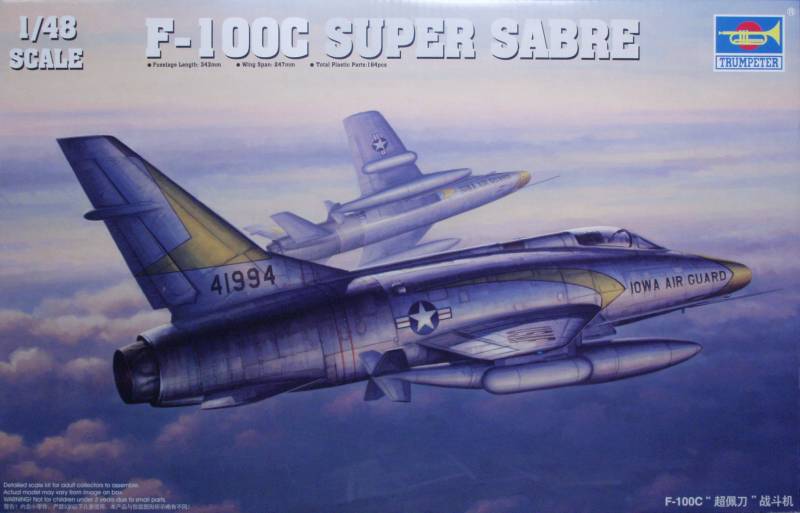
The parts are cleanly molded with only a hint of flash here and there. Mold parting lines are light and should be easy to clean up. The surface is glossy and the surface detail consists of recessed panel line and rivet detail. The rivet detail looks a little over done but not as bad as some of their kits. I didn't find any sink holes or other major defects on any of the air frame parts however they is a raised line that I suspect comes from a slide mold process that runs the length of the fuselage either right above or right below the radius where the side meets the bottom of the fuselage. While not a serious issue it needs to be cleaned up as it passes through several panels where there should be no panel line. I have seen this same effect on other kits from Trumpeter as well. The parts in my kit had a lot of mold release agent on them so a good bath before building would be a prudent thing to do. The wing flight control surfaces and lower air brake are molded separately as are the leading edge slats. The gun ports are not molded open and there is nothing indicating a gun is there either. There are parts included that are not for the 'C' version so be careful when selecting parts from the sprues. Not unusual for Trumpeter they also managed to get some things wrong. The tail is the 'D' model tail and should be the smaller 'A' model tail. The cockpit is just OK and you need to select the correct ejection seat as two different types are included. The instrument panel has raised bezels but no instrument detail but there are decals for bot the IP and the side consoles although I'm not convinced they will settle down over the raised detail.
There is no engine detail supplied not even a turbine face but the way the intake trunking runs you wouldn't see it even if there was one. The trunking is molded in halves so there will be a hard to deal with seam on both sides. The bottom of the trunking is free of them but the top has a couple of ejector pin marks, the one nearest the intake will probably be visible when the kit is complete. The exhaust end has a choice of two sets of tail feathers, the early type and the F-102 type that was retrofitted later in the aircraft's life and an exhaust tube that ends with a representation of the after burner rings molded on a blanking plate.
The wheels are molded in halves and are not weighted. The landing gear doors are free of ejector pin marks and have nice detail molded on but the detail on the main gear doors won't be seen as they are normally closed after they gear cycles down, the doors on the struts also have nice detail on the insides but mine had a couple small sink marks on the outside. The gear itself is nicely detailed. Other items of interest the kit has both the straight or bent type refueling probes and two pitot tubes, one extended and the other folded. The kit comes with two drop tanks and four Aim 98 missiles. OK, lets look at the sprues.
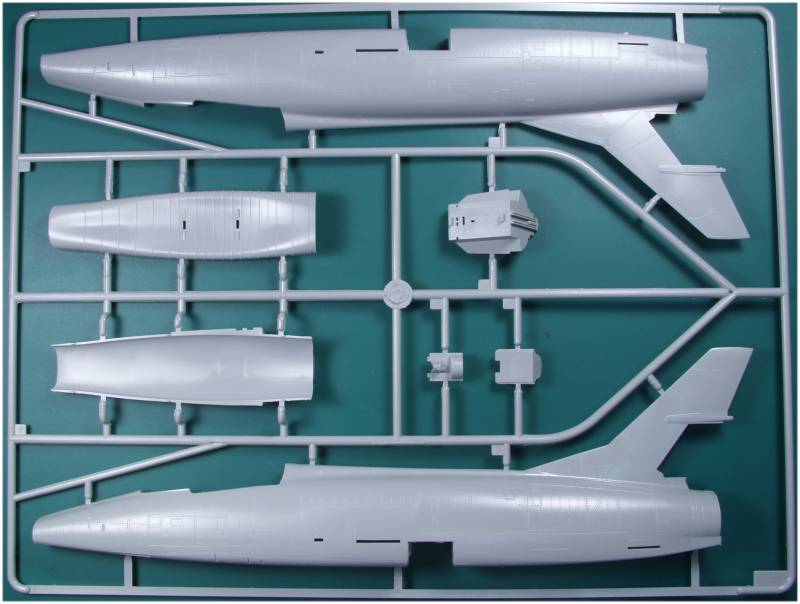
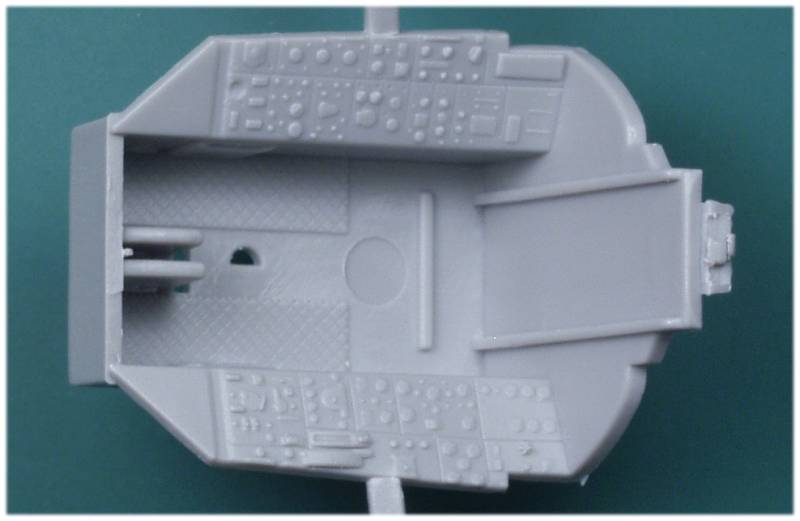
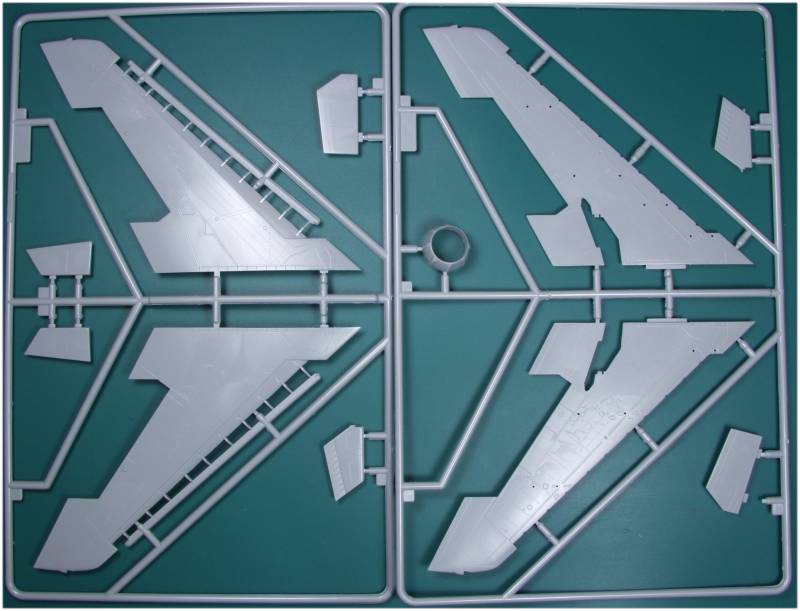
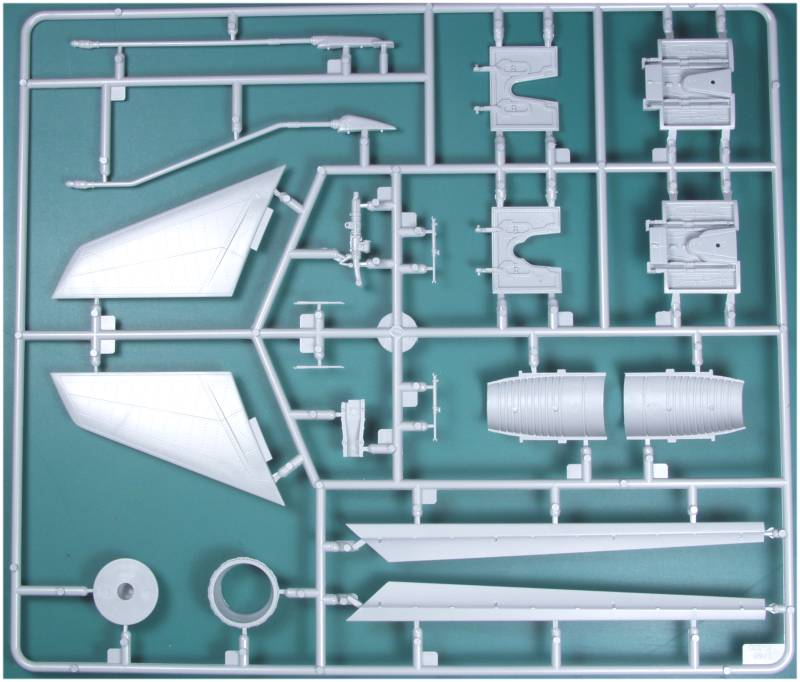
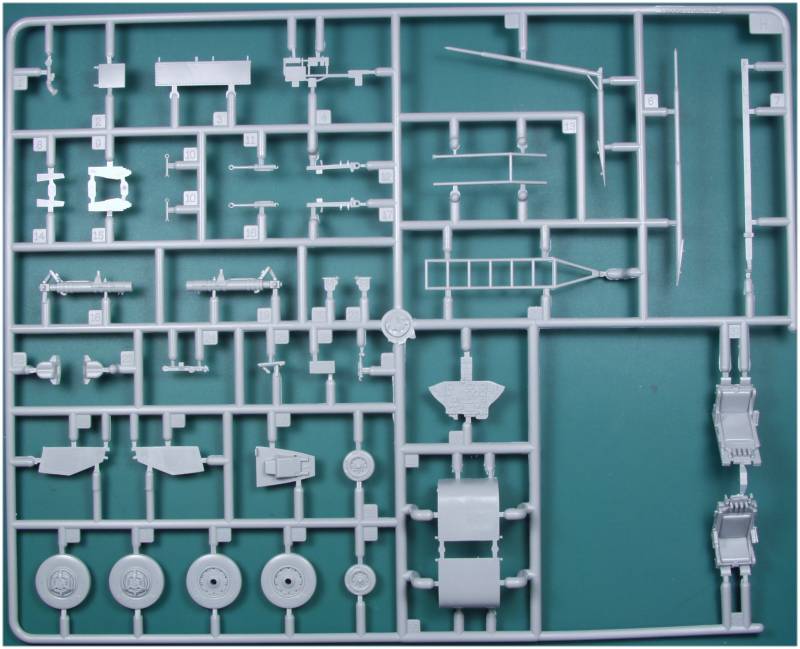
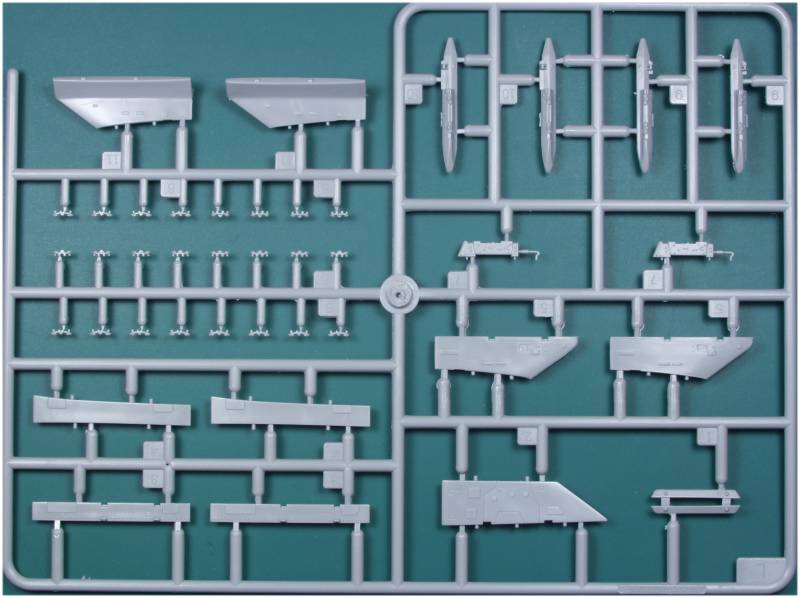
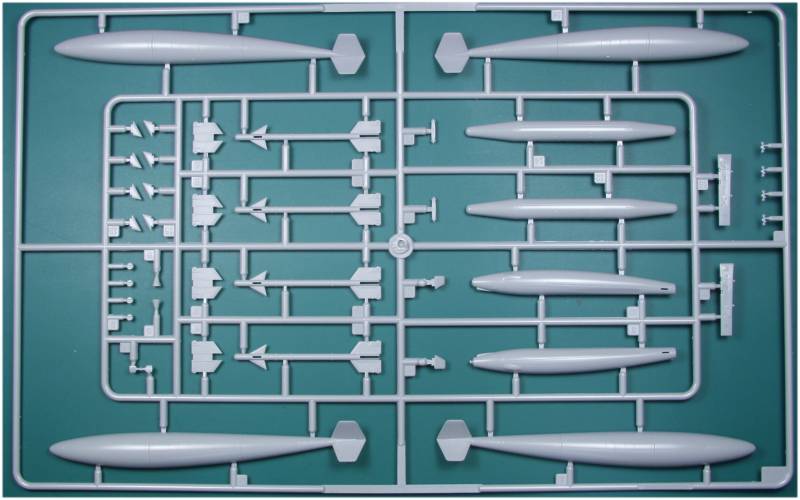
The clear parts are thin and clear and show little optical distortion.
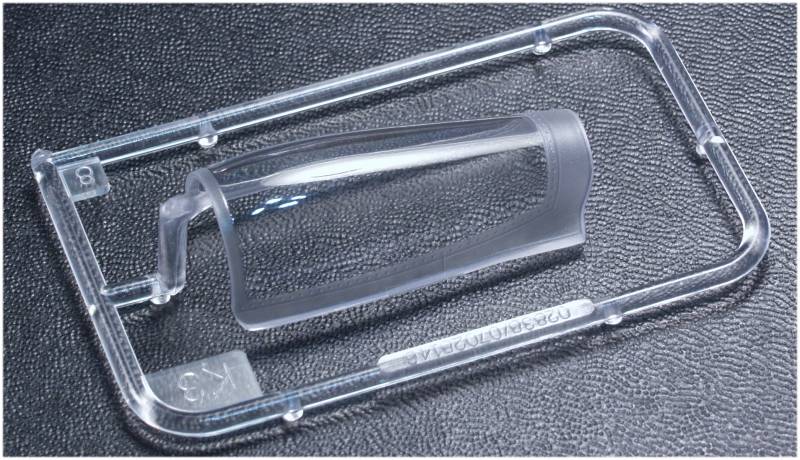
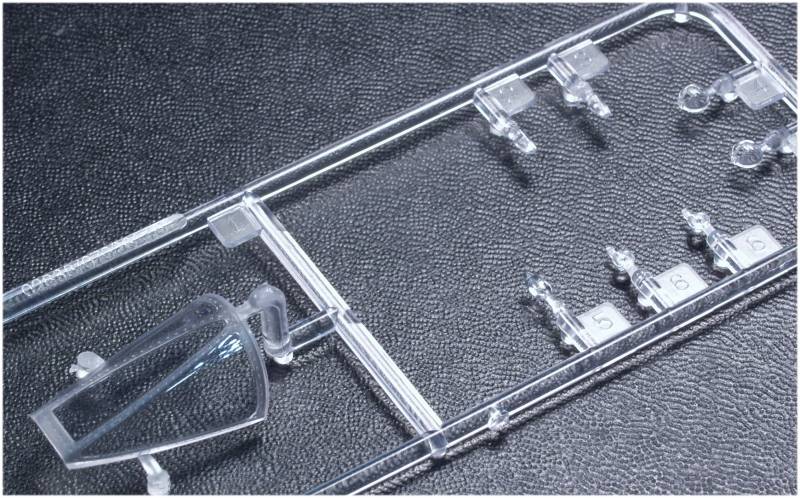
The decals appear thin and are in registration and have minimal excess film. A fair amount of stencils are included. The decals have markings for two aircraft, one a natural metal finish from the Iowa Air National Guard, the other in SEA camouflage with no information as to what unit or time.
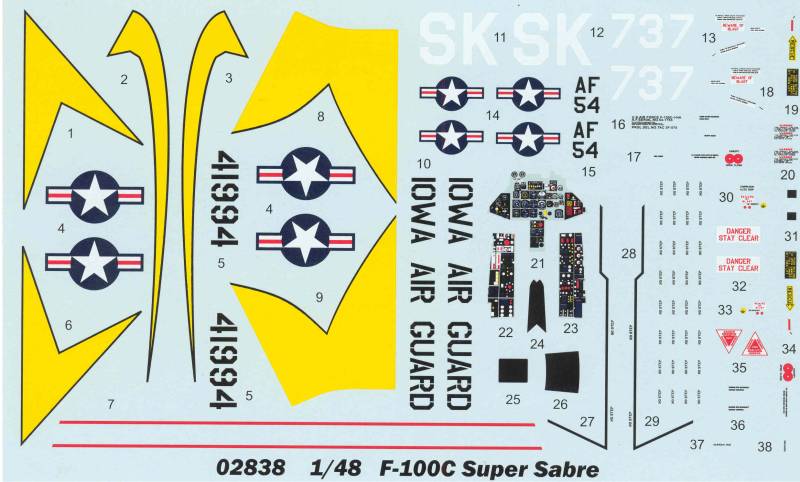
The instructions are an 8 page stapled booklet in the landscape format, page one has basic assembly information, decal application instructions and an icon chart. Page two has a parts map that instead of marking out unused parts it has there part numbers listed at the bottom of the page. Pages 3-8 have the assembly diagrams in ten steps. A separate page roughly 11x17" printed on glossy paper in color has the painting and lettering diagrams along with a paint chart with Mr. Hobby, Vallejo, Model Master, Tamiya and Humbrol references.
After Market Goodies
After reading other reviews I decided to invest in a replacement cockpit. Although I'll probably regret it I got the Aires set, 4456. Aries sets have a bad habit of not fitting well so we'll see how this one works. The set is mostly resin molded in a light gray color and consists of a tub with side consoles, separate side walls, ejection seat, seat rails, joy stick, shelf for behind the tub, instrument panel, forward cowl with HUD. A small fret of PE is supplied with the instrument panel using a layered film for the dials. It also includes PE to dress up the canopy, rudder pedals, HUD frame and belts and harness for the seat. The parts are crisply molded and I found no surface defects in mine.
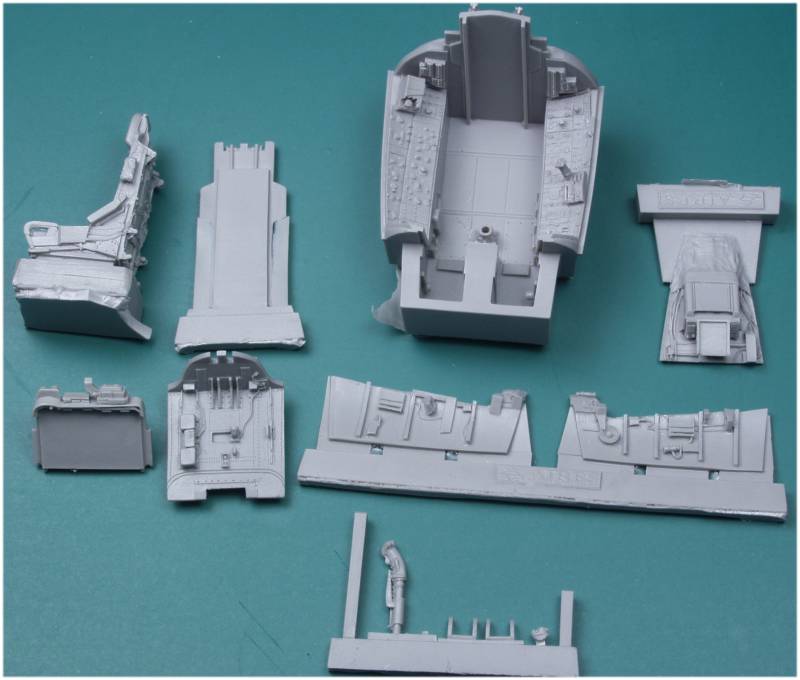
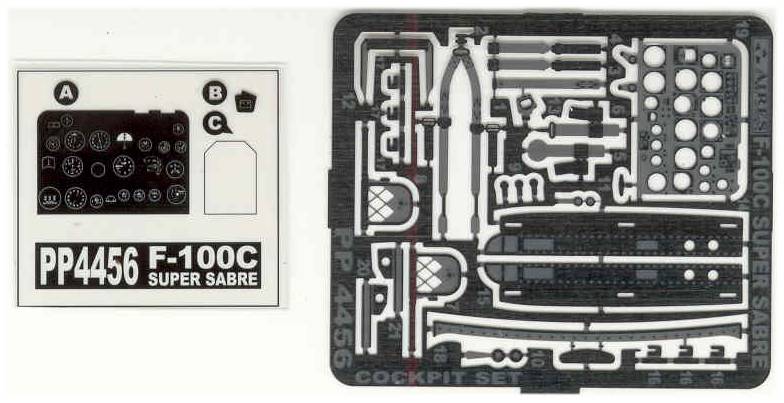
In a weak moment I also bought the Aries wheel bay set, 4457. The set includes both the fuselage and wing main gear bays and nose wheel bay. The fuselage gear bay is molded in a tan colored resin while the other parts are a gray resin. The detail is crisp and well detailed and I found no surface defects on mine. A few of the small parts became dislodged from the mold block and it looked like the package had taken a major hit somewhere but none of the parts were damaged. Had I know at the time the amount of work that will be involved with this set removing all of the molded on parts I probably would have passed.
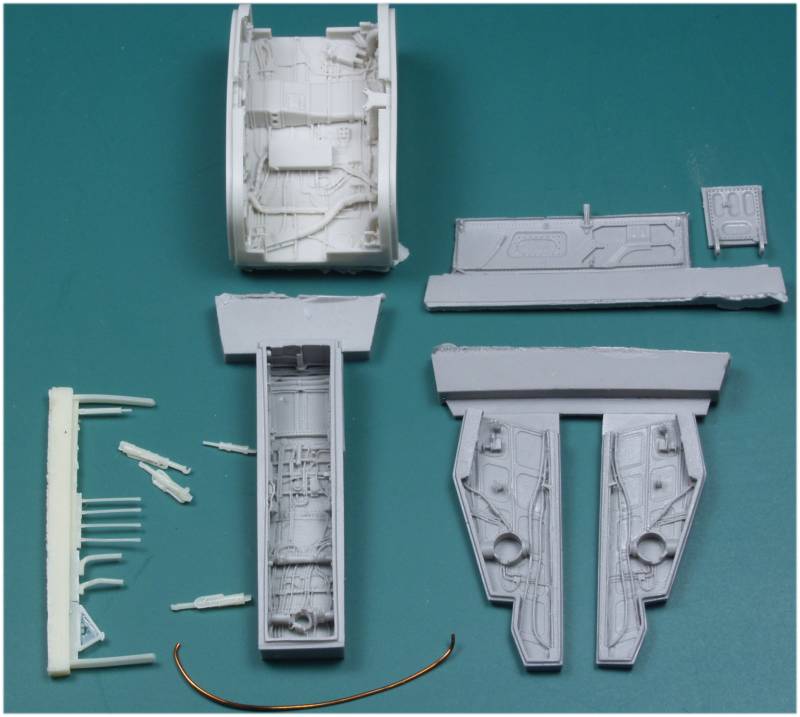
And lastly I got the Eduard color Zoom set because I have painting IP's and I didn't have a lot of faith the kit supplied decals would work that well. The set also includes colored belts and harness and some levers and other bits and bobs.
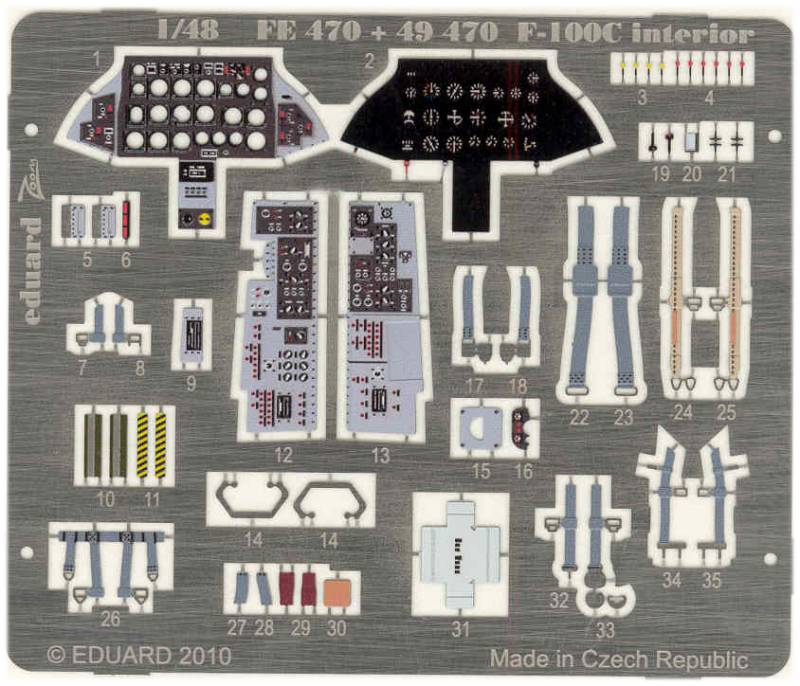
I currently have conflicting information concerning the tail on this kit, so until I feel confident which is correct I'm not going to say the following item is needed or wanted but someone went to a lot of trouble if the kit part is correct. Anyway, shown below is the AMS corrected tail AMS # 48031. It's nicely cast, the casting block should be easy to remove. There were no visible defects and two styles of rudder are included.
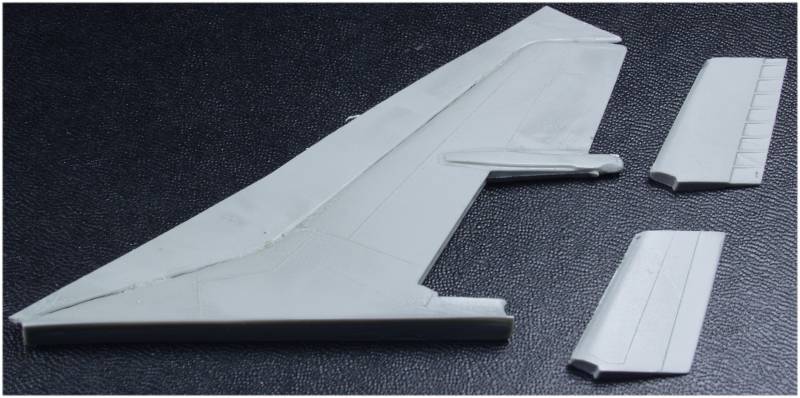
Conclusions
Over all this is a nice kit but it does have its issues and most of these are well outlined in the two reviews that are linked below. From most reports I have read the fit is pretty good. I chose the 'C' model over the more definitive 'D' model because the 'C' model was what my guard unit was flying when I signed up although I never got a chance to work on them as world events changed my situation. I'm hoping to mark it in those marking when I build the kit. If you are happy with the kit out of the box it should be an easy build well within the scope of most modelers. More advanced skills will be helpful if you want to dress it up a bit especially replacing the wheel wells !
Links to kit build or reviews
A couple of build review can be found here and here.
References
The only specific reference I had was the F-100 Super Sabre in Action by Lou Drendel. This was published in 1973, one of Squadron's early works and is not up to later standards. It had very little to say or see concerning the 'C' model. I got most of my information online.
Back to the Miscellaneous U.S.
Page